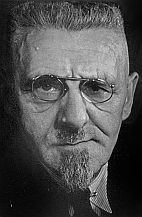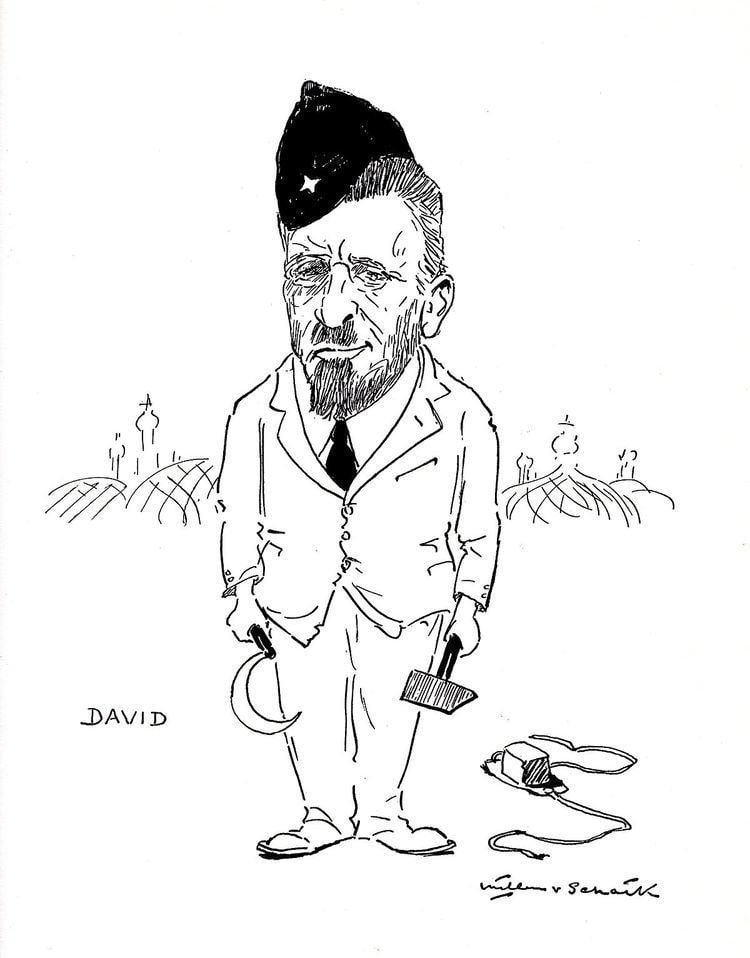Nationality Dutch Occupation revolutionary | Name David Wijnkoop Parents Joseph Wijnkoop | |
 | ||
Born 11 March 1876Amsterdam, Netherlands ( 1876-03-11 ) Political party SDAP (1899-1909)SDP (1909-1918)CPH (1919-1925)CPH-Wijnkoop (1926-1930)CPH (1930-1935)CPN (vanaf 1935) Spouse(s) Emma Josephine Hess (1907-1910)Johanna (Joosje) van Rees (1912-1941) Organizations founded Communist Party of the Netherlands, Communist Party of Holland – Central Committee Similar People Paul de Groot, Herman Gorter, Marcus Bakker, Gerrit Mannoury, Frits Dragstra | ||
David Joseph Wijnkoop (born 11 March 1876 in Amsterdam – died 7 May 1941 in Amsterdam) was a Dutch communist leader in the first half of the twentieth century. He was the eldest son of (upper) rabbi Joseph Wijnkoop and Dientje (Milia) Nijburg.
Contents

Life
At the Barlaeus Gymnasium, he was not accepted as a member of the school association Disciplina Scipio Vitae because he was a Jew.
He joined the Social Democratic Workers' Party (SDAP) in 1898 and broke with it in 1909 by SDAP and was with Jan Cornelis Ceton co-founder of the Social Democratic Party (SDP), predecessor of the Communist Party of Holland (CPH). Wijnkoop was the leader of the Communists in the years around World War I. He agitated fiercely against the Social Democrats and organized demonstrations in Amsterdam at the Amsterdam SDAP-alderman Floor Wibaut. He left the CPH in 1925, but returned to it later.
Wijnkoop interpellated in:
In 1931, Wijnkoop initiated a proposal to combat the adverse effects of the economic crisis on the workers, the proposal was withdrawn in 1932.
In 1907 Wijnkoop founded, together with Jan Cornelis Ceton and Willem van Ravesteyn, the magazine The Tribune. Together with the rest of the Tribune group, he left the SDAP and founded the Social Democratic Party (SDP), which in 1919 changed its name to Communist Party of Holland (CPH).
In 1925, Wijnkoop left the CPH, together with a number of supporters. The conflict was related to the growing pains of the party, but also with the wish to get a "workers deputy" in parliament instead of Van Ravesteyn. He sided with Van Ravesteyn. Thanks to the support of the Communist International, the minority in this conflict managed to win and Wijnkoop left.
On Prinsjesdag 1932, he and his group member Louis de Visser interrupted the Throne Speech from Queen Wilhelmina by shouting. This was countered by other MPs loudly singing the national anthem. In 1934, Wijnkoop and De Visser did the same, this time they were violently removed from the Ridderzaal where the speech was read.
While in hiding from the Germans during World War II, Wijnkoop suffered a fatal heart attack and died. Many people, including wanted communists, socialists and Jews, showed up at his funeral. Wijnkoop's wife Joosje was angry that Louis de Visser showed up at the funeral while he was a wanted man, but still asked him to do the graveside speech. It was the last public speech of De Visser, who did not survive the war.
Career overview
Education
As a young man, Wijnkoop attended several schools. He started at the Henry Wester School, a primary school located at the Weesperplein in Amsterdam. From there he went to the Barlaeus Gymnasium, where he came across the anti-Jewish incident, described earlier. Later he studied Arts at the Amsterdam Municipal University until April 14, 1899. He never finished this study, due to his social and political activities under the influence of Ferdinand Domela Nieuwenhuis.
Addresses
There are several addresses known of Wijnkoop. The first was his parental home at the Plantage Kerklaan in Amsterdam. During his marriage with Emma Hess (1907-1910), he lived on the Nieuwe Herengracht 10, also in Amsterdam. After his marriage breakdown he decided to look for new horizons and lived in London for a while. When he married with Joosje van Rees, he lived on Pretoriusplein 3 III.
